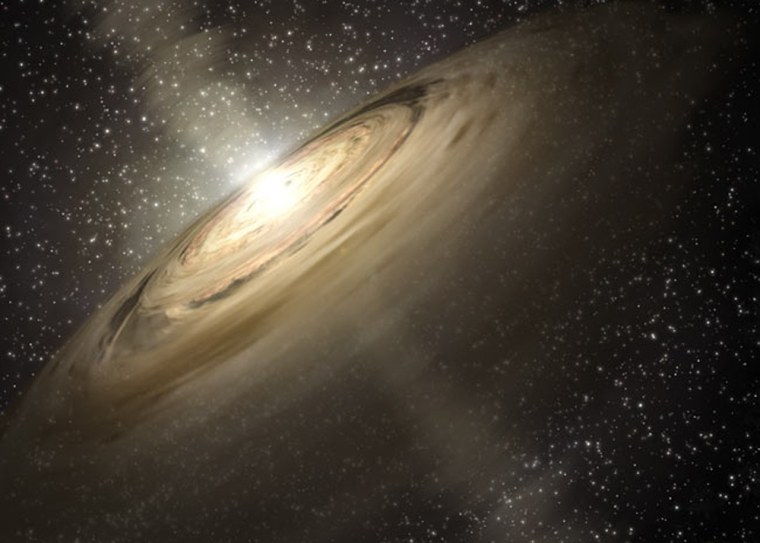The basic molecules of life are scattered through the universe, collecting in faraway galactic clouds, on passing comets and asteroids, and on the planets here in our solar system.
But scientists still don’t know how these molecules came to be, or how they originally came together to form life. Now, for the first time ever, astronomers have found some of the basic compounds necessary to build organic molecules and proteins found in DNA within the inner regions of a planet-forming disk.
“We see prebiotic organic molecules in comets and the gas giant planets in our own solar system and wonder, where did these chemicals come from?” said Marc Kassis, support astronomer at the W.M. Keck Observatory. “The Spitzer Space Telescope is letting us study these young stellar objects in new and revealing ways, giving us exciting clues about where life may form in the universe.”
The object — IRS 46 — is located in the Milky Way galaxy, about 375 light-years from Earth, in the constellation Ophiuchus.
The researchers detected two organic compounds — acetylene and hydrogen cyanide — in amounts nearly 10,000 times higher than found in the cold interstellar gas where stars are born. These compounds are commonly found in the atmospheres of the giant gas planets in our solar system, the icy surfaces of comets, and the atmosphere of Saturn’s largest moon, Titan. They also detected carbon dioxide, which is widespread in the atmospheres of Venus, Earth and Mars.
Where does life lurk?
The presence of gas-rich disks around young stars is well-known, but little is understood about their chemical structure. The discovery of acetylene and hydrogen cyanide in one of these disks will help astronomers better understand them and where future solar systems may someday form and possibly result in life.
"If you add hydrogen cyanide, acetylene and water together in a test tube, and give them an appropriate surface on which to be concentrated and react, you'll get a slew of organic compounds including amino acids and a DNA purine base called adenine," said co-author Geoffrey Blake of the California Institute of Technology in Pasadena. “Now, we can detect these same molecules in the planet zone of a star hundreds of light-years away."
The dust and gas surrounding a young star block visible light, but let longer wavelengths, such as infrared light, pass through. Astronomers can determine the composition of this gas and dust by separating the light into its component wavelengths.
One out of more than 100
Astronomers have used this technique since study molecular compounds in protoplanetary disks of young stellar objects. The Spitzer “c2d legacy program” has looked at more than 100 sources in five nearby star-forming regions, and only IRS 46 showed clear evidence of containing the organic compounds in the warm regions close to the star where terrestrial planets are most likely to form.
The results also indicate the presence of a stellar wind coming from the inner region of the disk orbiting IRS 46. The wind may eventually blow away the dusty debris in the disk, perhaps revealing the presence of rocky, Earthlike planets in several million years.
"This infant system might look a lot like ours did billions of years ago, before life arose on Earth," said study leader Fred Lahuis of Leiden Observatory in the Netherlands and the SRON Netherlands Institute for Space Research.
These findings will be published in an upcoming issue of the Astrophysical Journal Letters.
